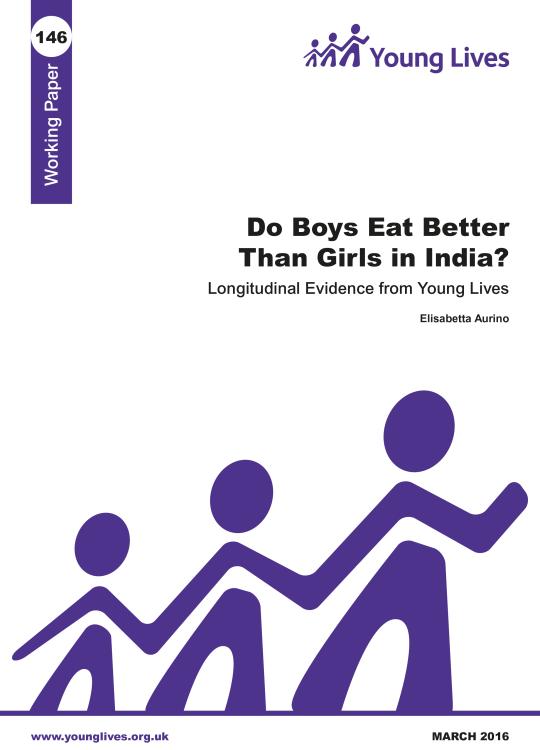
Breadcrumb
Do Boys Eat Better than Girls in India?
This paper examines gender inequalities in the quality of children’s diet, as defined by dietary diversity, among children growing up in Andhra Pradesh and Telangana. Dietary diversity is a fundamental aspect of good nutrition: a varied diet is essential for ensuring an adequate intake of the macro- and micro-nutrients (vitamins and minerals) that are required for children’s healthy growth and proper physical and cognitive development.
The empirical results show that:
While there are no gender disparities in dietary quality for children aged 5, 8 and 12 years old, a wide pro-boy gap emerges in the middle of adolescence at 15 years old. 15-year-old girls are less likely to consume the foods that contain most of the protein and micronutrients that are necessary for healthy development, such as eggs, legumes, root vegetables, fruit and meat. Boys whose caregivers who have high aspirations for their children’s education are particularly advantaged in the allocation of food within the household.
The results are robust even when controlling for factors that may explain the observed gender gap (onset of puberty, time-use and time spent working or at school, as well as dietary behaviours such as skipping meals).
In the context of India, these findings are important for a number of reasons. First, India is home to the largest youth population in the world and adolescent health is a key policy priority. Second, the burden of malnutrition among both girls and young women is the highest in the world. Furthermore, improving adolescent girls’ diets, beyond being a development objective per se, can also help to break the intergenerational cycle of malnutrition.

